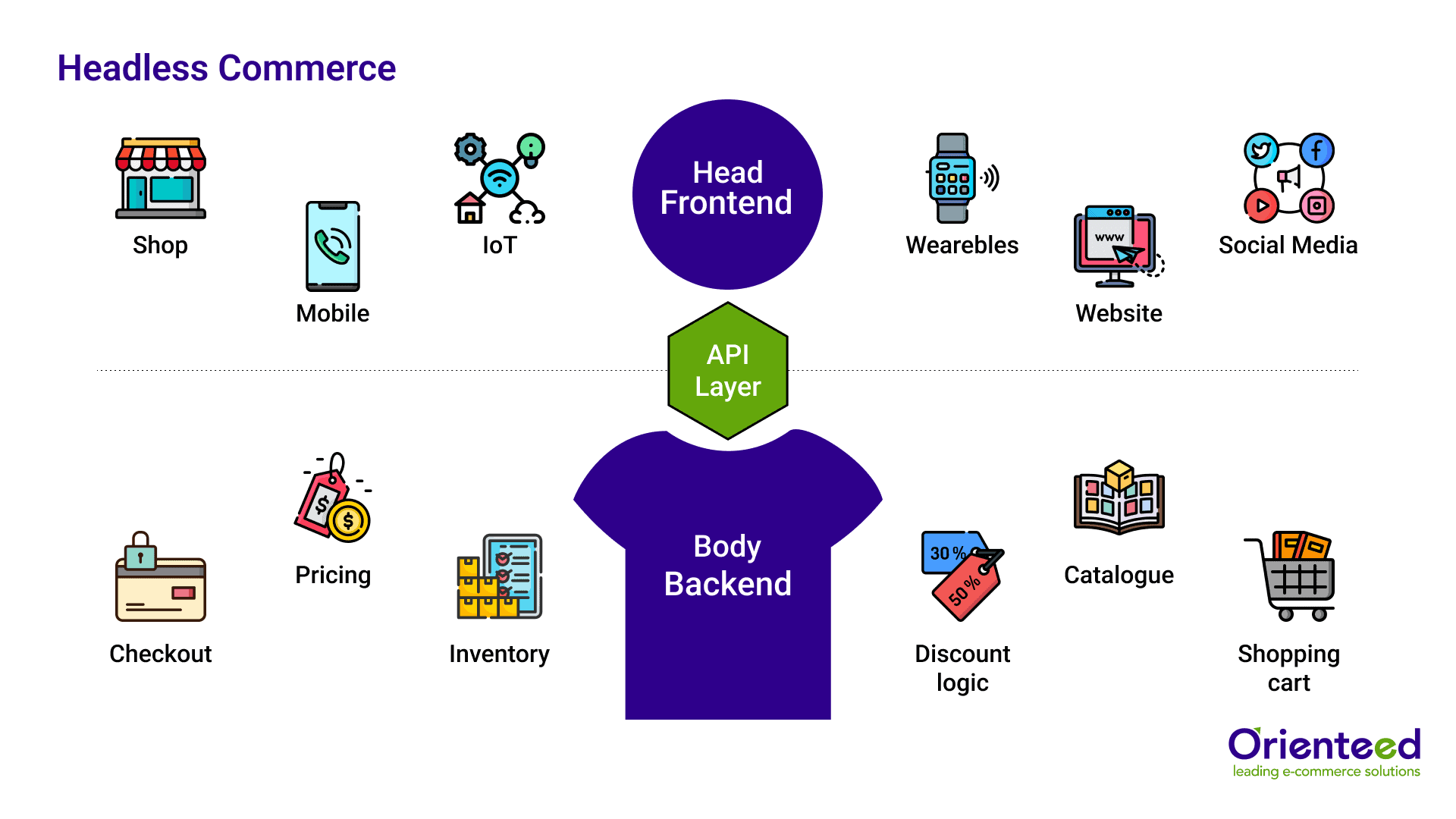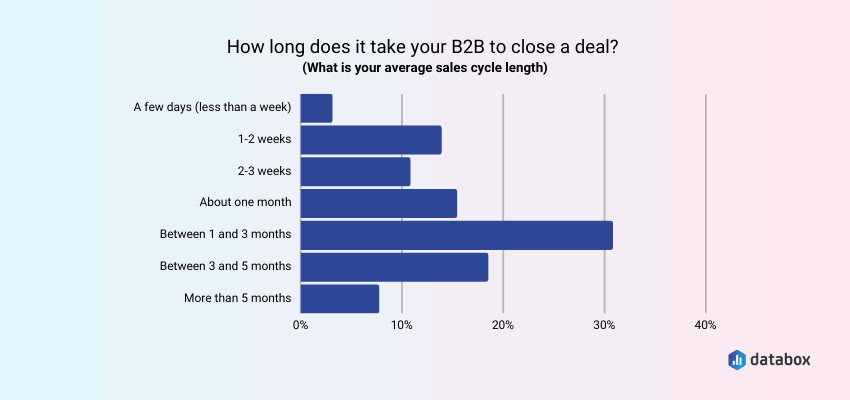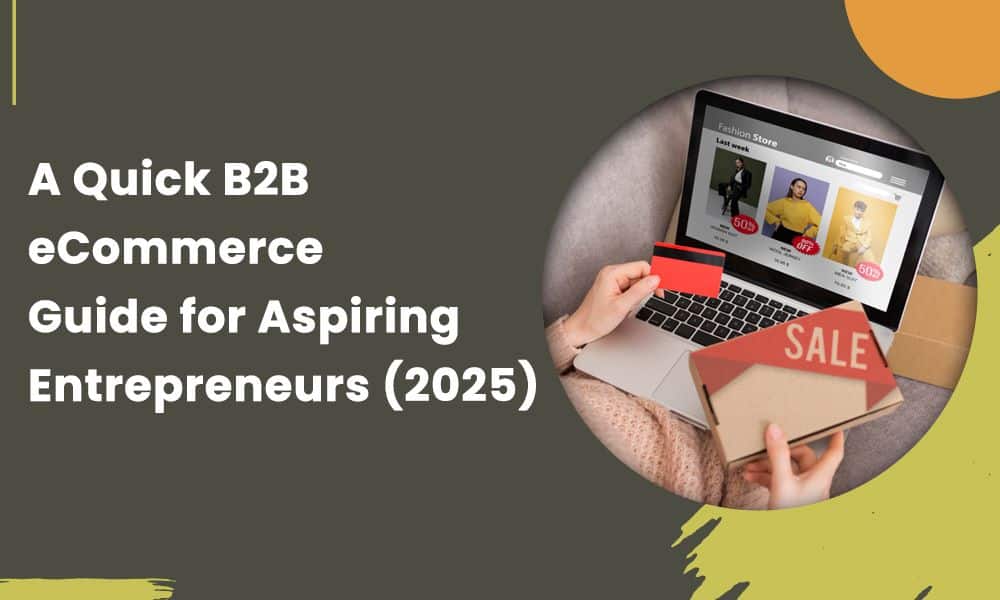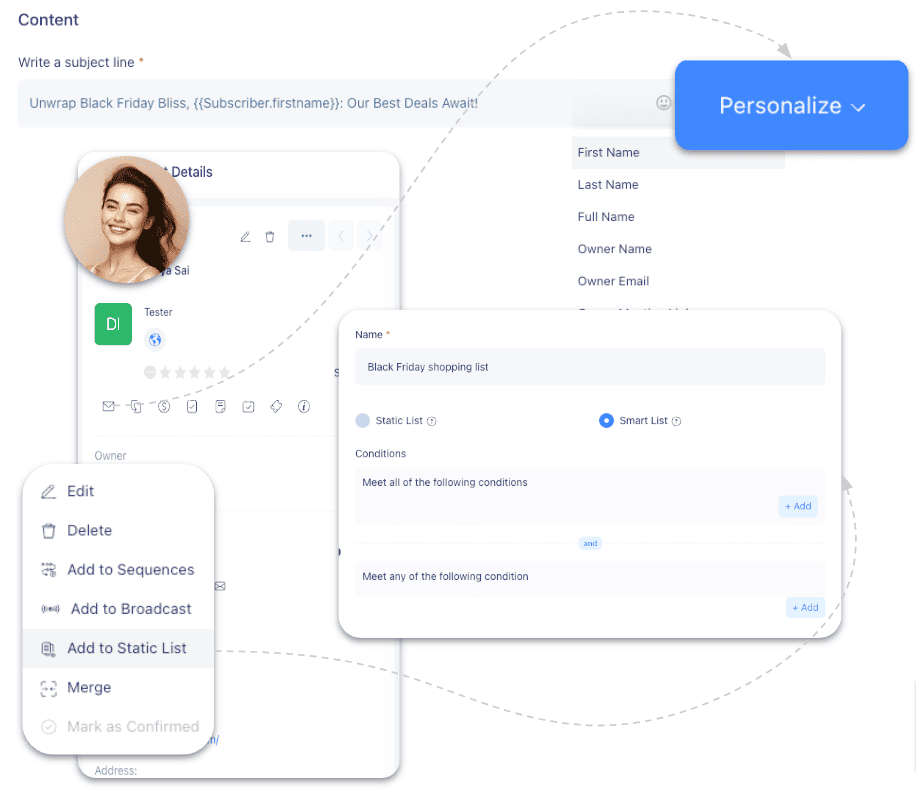The B2B eCommerce market is ever-evolving, with all signs pointing toward growth in 2025. Digital eCommerce 360 projects a United States gross domestic product or GDP jump of 1.6% to 2% after a promising but not exactly unique 2023.
Nevertheless, the market is still alive and kicking, with 64% of its makeup being Gen Z and Millennials. Most of those Millennial shoppers like their purchasing interactions to be completely sales-rep-free.
Being a major contributor to the global market, it’s worth paying attention to what’s happening in B2B online sales, including growing trends like a move toward digital channels and what those technological advancements mean for B2B transactions.
This guide is designed to peel back the curtain on trends in B2B eCommerce and the technologies that have strongly impacted it. I’ll also include my best tips on optimizing your customer experiences in an increasingly tech-driven and changing landscape.
In this blog post, we’ll take a look at the various aspects of B2B eCommerce, including trends, related technologies, challenges, and solutions.
Let’s get started!
Table of Contents
Emerging Trends in B2B eCommerce
Do you know what spurs growth? That’s right, the development of new markets and trends. The B2B eCommerce sector is great at adopting the most promising ones, which explains why it’s driven so much forward innovation.
Your business should have your finger on the pulse of the following trends so you can adapt (if they suit your business model) and be ready for your competitors’ next steps.
Mobile optimization
Okay, so while some trends are optional, mobile optimization is not. With more than 50% of internet traffic coming from mobile devices, your site must be ready to accommodate these users.
A mobile-optimized website is responsive above all else so that no matter the size of the device, whether a tablet or smartphone, the site has the same rendering quality and looks good.
Some other facets of mobile optimization are:
- Cutting down on the amount of pop-ups
- Producing content catered toward your mobile audience
- Compressing image size
- Improving website loading speed
- Using whitespace
- Simplifying your navigation menu
- Ensuring the site materials are readable
Optimizing your mobile website aims to invite more consumers to shop. Statista reports that the rate of mobile commerce revenue will likely hit $2 trillion in 2024. Your B2B business can’t afford to miss out on so much revenue.
AI and personalization
AI may yet become the best friend of B2B eCommerce businesses. It has so many uses already, and who knows what kind of untapped potential could await?
I won’t discuss how AI can help with financial projections or operate as a chatbot here.
Instead, I’ll discuss its personalization potential.
AI tools can segment your audience faster and more conveniently than it takes your B2B business to do the same. You select the criteria you want to use to divide your audience, and the AI tool takes care of the rest.
Once you’ve segmented your audience by criteria as precise as you wish, you can use AI to personalize your marketing messages.
How? AI tools can review your audience data and project what customers might be interested in purchasing next, including an estimated purchase volume. Further, it can write emails, social media posts, and content for you, allowing you to target various audience segments more conveniently and efficiently.
Marketplaces
B2B marketplaces are the backbone of the eCommerce experience. Platforms from Amazon to Global Sources, Alibaba, DHgate.com, eBay, IndiaMART, and AliExpress are incredibly advantageous to B2B, especially B2B eCommerce.
These marketplaces rose fast and furious, and their presence has been well-established. Consumers can find what they’re looking for by browsing these B2B marketplaces’ websites or downloading apps and scrolling through results on their phones or tablets.
As for the vendors (i.e., your business), selling in a B2B marketplace presents many advantages to you. You can reach a large audience, perhaps bigger than your advertising and marketing efforts have yielded.
Additionally, there’s personalization built into the marketplaces, such as product recommendations for shoppers after they’ve purchased a few items.
SaaS and cloud adoption
Another noteworthy trend in B2B eCommerce is the move toward SaaS, which is favored as a B2B digital commerce option. An increasing number of these SaaS platforms cater to the needs of B2B businesses, offering more integrations, a higher uptime rate, productivity tools, and commerce adoption.
Cloud adoption is another feature of increasing SaaS platforms supporting B2B eCommerce businesses. This form of cloud computing increases database scalability, setting the stage for your business to grow.
Read more: Find the Perfect B2B eCommerce Platform for Your Needs
Technologies Reshaping B2B eCommerce
The tech trends I highlighted in the section above are the start of what’s coming down the pike in B2B eCommerce. There are so many more technologies at play that you’ll have to understand to stand a chance of succeeding in the market.
AI-driven analytics and customer service
Okay, so I said before I wasn’t going to talk about AI’s uses for eCommerce businesses outside of personalization and segmentation then, but now I’m going to do it.
AI tools are truly capable of some awesome things, and this proves it.
For example, you can request campaign analytics in report format from your AI tool and get instant results. You can pinpoint precise data points, ask for specific criteria, put it in chart or graph format, or whatever you need.
Machine learning makes it possible, so your reports should get better the more you request them. Better yet, since AI is all tech-based, it doesn’t make human errors with numbers like we’re prone to do as humans (not a knock on us people at all; it just happens).
Besides the reports that can paint clearer insights about which products your customers like and how much they’re spending, you can also use AI as a customer service representative.
Again, training AI to respond like your reps via machine learning will enable it to deal with customer queries as they arise independently.
This has a lot of benefits.
For one, you can save on overhead costs, as you won’t have to hire as many customer service reps to handle your customer demand. You can also ensure your reps are under less pressure, as the AI can free up their time to handle more advanced customer issues.
Perhaps best of all, your customers can always expect a response to their queries, no matter when they ask, as AI doesn’t have business hours. It doesn’t have to sleep, take vacations, or celebrate holidays. It’s always there, ready to get the job done.
Headless commerce
Technology has also given us headless commerce, like MACH, an architecture used in eCommerce applications. It’s called headless because the back and front ends are separated, allowing both to work freely without reliance on one another.
Both sides can now strive to benefit the consumer by providing more personalization and higher-quality products or services. Beyond that, the creative capabilities of both sides are huge trademarks of the service.

You can integrate headless commerce systems with APIs and other services and tools you already use, from IMS to PIM and ERP, tailoring the consumer’s shopping experience to suit your brand.
Headless commerce is scalable and adaptable, making it a desired part of many B2B eCommerce strategies.
Augmented reality (AR)
The last piece of tech might be among the most impactful for the B2B eCommerce market. I’m talking about augmented reality or AR.
eCommerce businesses primarily operate online, which is excellent for scaling operations, expanding audience reach, and converting leads while increasing sales. However, one of the areas in which it’s not so great is seeing items before purchasing.
Sometimes, it’s nice to hold something in your own hands and feel the material and craftsmanship. In the case of clothing, it’s valuable to be able to try on the item to ensure it fits.
We’ve all had experiences where we ordered something online and were unhappy when it arrived. Perhaps it was a completely different color or style than the online photos, or maybe the fit was wildly different from what we expected.
These experiences lead to instant returns, which are costly for your business to process and can erode trust in your business, potentially causing you to lose customers.
This is why AR is so valuable. This combination of real life and 3D allows consumers to “try” something before they buy it. They can see how the clothing would look on their bodies rather than only model photos. They can envision what a product looks like in their office lobbies or living rooms.
That kind of assurance is worth its weight in gold. While AR can’t entirely replicate the experience of seeing and holding an item and comparing it in a store, it does help with other critical areas of the purchasing process.
You just might be able to inspire more sales by offering AR (and faster sales, too), and better yet, you should also be able to curtail your rate of returns.
Read more: B2B eCommerce Trends To Adopt For a Business Boost
Customer Experience Optimization
Heightening the customer experience always behooves your business, as you can connect more meaningfully with prospective customers and retain your existing audience. The following techniques are worth emulating:
Personalization strategies
Making the shopping experience more personalized for your audience will inspire more sales, as the customer won’t have to do as much research into products or services they may be interested in. That will streamline sales for your business.
Personalizing B2B eCommerce is easy when you can do the following:
- Tailor content by industry, especially if your B2B business has multiple specialties or areas of focus.
- Keep a record of a customer’s history of purchases so they can go back and buy the same product again or recommend it to a friend, family member, or colleague.
- Share customer testimonials or reviews tailored to a customer’s stage in the buying process (i.e., a testimonial a customer left after making their first purchase) or the product/service they’re buying (a review on the same product/service).
- Use omnichannel marketing strategies to connect with your audience on the platforms they use the most regularly.
- Build landing pages for each product and service you offer. You might also create landing pages with segmentation criteria in mind, such as a landing page catered to a repeat site visitor who has yet to buy anything.
- Offer personalized credit limits to inspire more purchases, increasing the limit after buying more.
- Let customers create wish lists of products they want, saving their favorites to return to later.
- Personalize recommended products or services according to a customer’s purchase history, needs, and other criteria identified in your audience data.
- Introduce a personalized product catalog with products that suit your customer based on their pain points and the products they’ve bought.
- Consider customer-specific contract pricing to cut out the need for a sales assistant.
Omnichannel selling
Let’s discuss omnichannel opportunities further, such as omnichannel selling.
Omnichannel selling combines the best of marketing and sales across many channels. The goal is to create a seamless shopping experience whether customers purchase your products on your website, an app, or social media. You can incorporate email marketing, online marketplaces, and even your brick-and-mortar stores into your omnichannel approach.
And the keyword here really is seamless. If a customer visits your store (assuming your B2B eCommerce business has a brick-and-mortar store), your sales staff should be able to review that customer’s profile and know what they’ve bought online so they don’t recommend the same products to the customer.
Likewise, your online reps can check the customer’s purchase history and see what they bought at the store and when.
Omnichannel selling makes purchasing products as easy, effortless, convenient, and efficient for customers as possible, facilitating more sales and improving customer loyalty.
Read more: A Brief B2C eCommerce Guide to Get More Customers (2025)
Challenges and Solutions
Growth sometimes occurs in fits and spurts, which means that as your B2B eCommerce business scales up, you may face some difficulties. Fortunately, this is common enough, so you can rely on actionable solutions to keep your business on an upward trajectory.
Let’s take a look!
Navigating complex sales processes
Even though you might have instituted various measures to expedite the process, B2B eCommerce sales don’t always progress as smoothly and straightforwardly as you might think.
The problem is two-pronged. For one, there are usually a lot of stakeholders involved in the decision-making on both sides, since these are businesses selling to other businesses. The customer wants to take their time with research and product comparisons to spend their money wisely.
As you can imagine, this methodical, concentrated decision-making slows down the entire sales process.
According to a study from Databox about closing B2B deals, most deals take between one and three months, as illustrated below.

What can you do to expedite the process? Or is there anything you can do? There is.
You might guide them toward a decision sooner by showcasing your brand value, having available staff to answer questions, and personalizing all interactions with the lead.
Data security and compliance
With the migration of shopping becoming largely online, customers care more than ever about their data being safeguarded. And rightfully so! Who wants their name, business address, and personal financial details floating around in the ether? Nobody.
The standard data security best practices apply. Introduce firewalls, use two-factor authentication, switch from HTTP to HTTPS, and request that your customers create strong, hard-to-guess passwords.
Stay abreast of the latest laws and guidelines on data security, including those in your country and outside of it. After all, some data laws, like the GDPR, affect European Union businesses and consumers. Therefore, if you sell overseas, you still must comply with the regulations.
Logistics and inventory management systems
The inventory and logistics management systems you initially used can become woefully outdated the longer you go, and the more your business grows. As I’m sure you would guess, outdated systems risk product delivery.
You might not realize an item is out of stock because your inventory management system is so bad, so it’s still listed on your website. Considering all the time and contemplation that goes into making a B2B eCommerce purchasing decision, you don’t want to create any roadblocks that might cause prospective customers to change their minds about your service.
That’s why it’s a good idea to review your management systems and scale up, if necessary, annually. Ideally, your management software upgrade should have scalability built in so you don’t have to continually review what you’re using.
After all, there are difficulties associated with changing your software. You have to research your options, have interviews with several different companies, try a handful of demos, and then account for different pricing.
Additionally, you must teach your team how the software works, so it’s a lot overall. These are all great reasons to stick with one inventory and logistics management software for longer.
Segmentation
Dividing your audience into “buckets” might seem easy, but you’d be surprised. It’s not that segmentation is hard, per se, but that you can make mistakes if you focus on the wrong criteria or don’t break down your audience groups specifically enough.
The B2B eCommerce market is competitive. You would hate to have your marketing messages fall flat because you didn’t choose the right criteria when dividing your audience.
How do you fix this gaffe? You can rely on AI to segment your audience, but you should learn how it’s done to ensure the AI does a sufficient job.
Building credibility and maintaining trust
Another challenge B2B eCommerce businesses can face is being perceived credibly. When starting at the bottom can seem hard to do, but this gives you a blank slate to work with, so look at it that way.
Focus on your industry expertise and what sets you apart. Publish high-caliber content that backs up that expertise, and hire professional, reliable, knowledgeable staff.
Maintaining trust means not forgetting where you came from.
Your reputation might be forged now, but it can always slip if you make too many mistakes. Continue to be a major source of authority for your industry or niche by staying abreast of trends, monitoring what your competitors do, and always staying one step ahead.
Read more: The Beginner’s Guide to Writing an eCommerce Business Plan
Conclusion
Staying ahead in the competitive and changing B2B eCommerce landscape is critical to positioning your company as the premier choice. Businesses must be ready to adopt and adapt to new trends to secure a competitive edge.
Now that you’ve got the steps to success, you can forge ahead and take your B2B eCommerce business to new heights.
EngageBay is an all-in-one marketing, sales, and customer support software for small businesses, startups, and solopreneurs. You get email marketing, marketing automation, landing page and email templates, segmentation and personalization, sales pipelines, live chat, and more.
Sign up for free with EngageBay or book a demo with our experts.
Frequently Asked Questions (FAQ)
1. What are the top B2B eCommerce platforms in 2025?
There are many big players in B2B eCommerce this year, including:
- PrestaShop
- OpenCart
- BigCommerce
- Pepperi
- Netalogue
- LogiCommerce
- Magento
- Adobe Commerce
- HubSpot
- Amazon Business
- Alibaba
- HubSpot
2. How can AI enhance the B2B customer experience?
AI can augment the customer experience for B2B businesses in many ways, such as dividing audience segments, predicting what customers might buy next, personalizing customer communications, and offering product recommendations.
3. What are the best practices for integrating an omnichannel strategy in B2B eCommerce?
Building an omnichannel strategy for your B2B eCommerce business requires synching all data across platforms, including online and brick-and-mortar, to ensure your staff can access it as needed.
4. How important is mobile optimization for B2B eCommerce platforms?
Incredibly! It couldn’t be more important. Most people who discover your B2B eCommerce brand are going to find you via their smartphone or tablet, so your site must be easily navigable, or you’ll lose their potential business.

